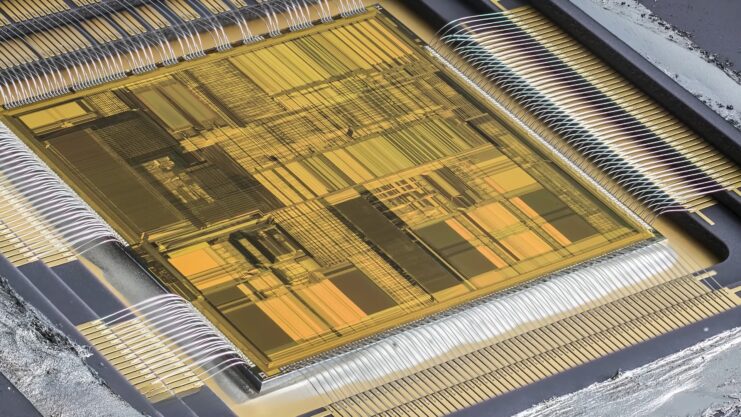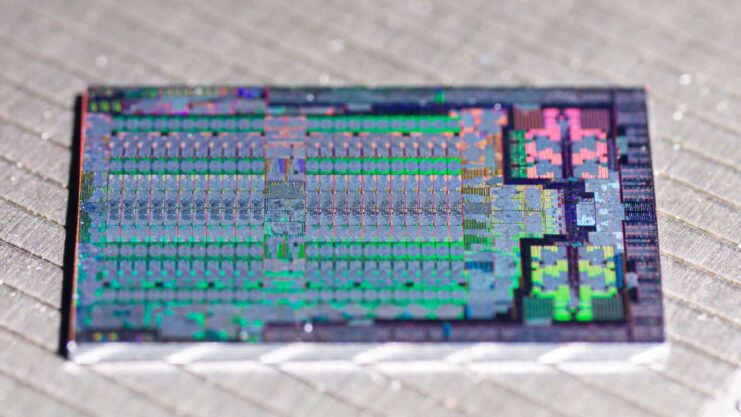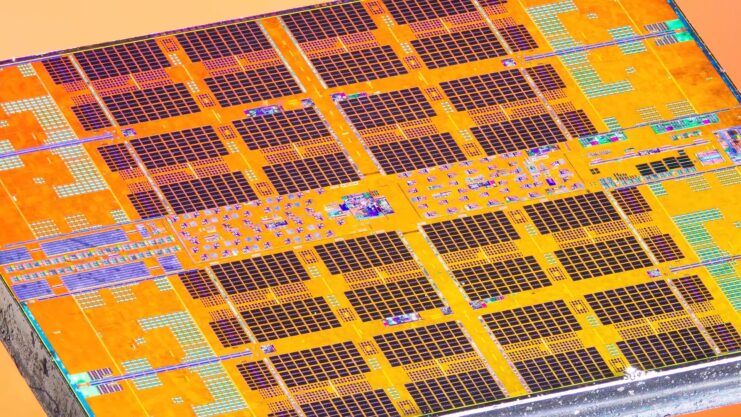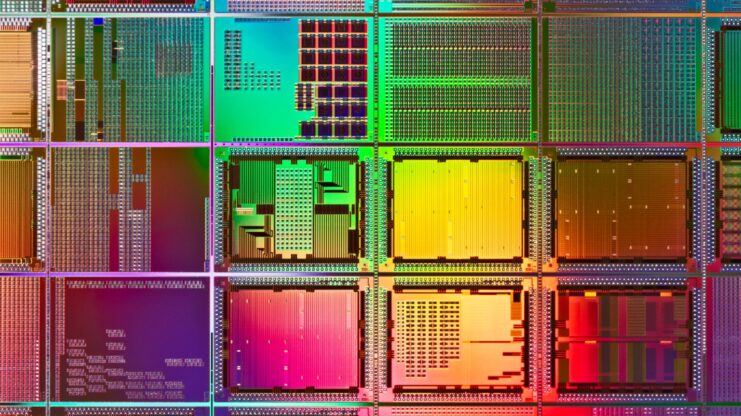When I think about the heart of modern computing – the Central Processing Unit (CPU) – a fascinating element to consider is the number of transistors it contains. The evolution of CPUs showcases a relentless march towards higher transistor counts, a trend mirrored by Moore’s Law.
This law, proposed by Gordon Moore in 1965, predicted that the number of transistors on a microchip would double every two years, a forecast that has astonishingly held true for decades.
The Start of a Revolution

In the early days of computing, CPUs were massive, room-sized machines with limited processing power. The introduction of the transistor in the 1950s marked a radical shift.
The first commercial CPU, the Intel 4004, released in 1971, contained a mere 2,300 transistors. This was revolutionary for its time, enabling more complex computations and functionalities in a much smaller space.
Exponential Growth
Fast forward to the late 20th century, and the number of transistors in CPUs had increased exponentially. The Intel Pentium processor, launched in 1993, boasted 3.1 million. This jump in count allowed for significant improvements in computational speed and efficiency, paving the way for multitasking and advanced graphics in personal computers.
Today’s Technological Marvels
Modern CPUs like AMD’s Ryzen and Intel’s Core series are marvels of engineering, containing billions of transistors. The exact number varies by model and generation, but it’s not uncommon to see CPUs with over 30 billion.
This staggering number allows for incredible processing power, supporting everything from basic computing tasks to complex artificial intelligence algorithms.
Transistor Functionality in CPUs

To appreciate the significance of the number of transistors in a CPU, it’s essential to understand their role. They are the fundamental building blocks of modern electronic devices, acting as switches that control the flow of electrical current.
The Basics of the Operation
A transistor operates by using a small input voltage to control a larger current. In CPUs, they are used to perform logical operations and store data. The more transistors a CPU has, the more operations it can perform simultaneously, enhancing its overall performance.
The Role in Processing Speed
Transistor count directly influences a CPU’s processing speed. With more transistors, a CPU can handle more instructions per second. This increase in processing capability is crucial for running complex software, multitasking, and handling computationally intensive tasks like video rendering and scientific simulations.
Power Consumption and Heat Dissipation
As transistor counts rise, so do challenges related to power consumption and heat dissipation. More of these units means more power is needed and more heat is generated.
This has led to innovations in CPU architecture and cooling technology, ensuring that these microscopic powerhouses operate efficiently without overheating.
The Future of Transistor Scaling

The continual increase in the number of transistors in CPUs raises questions about the future of computing hardware.
As we approach the physical limits of silicon, the material most transistors are made of, the semiconductor industry is exploring new materials and architectures.
Approaching the Physical Limits
As transistors shrink to atomic scales, we encounter physical and practical challenges. Quantum effects start to interfere with the operation of transistors, and manufacturing becomes increasingly complex and expensive.
This has led to predictions about the end of Moore’s Law, as doubling transistor counts every two years becomes unsustainable.
The Next Frontier
Researchers are experimenting with alternative materials like graphene and molybdenite to overcome the limitations of silicon. These materials promise smaller, faster, and more energy-efficient transistors.
Additionally, advances in 3D stacking technology allow for more transistors to be packed into the same space, offering a potential path forward for increasing counts without shrinking individual components.
The Role of Software Optimization
As hardware advancements face physical limitations, software optimization becomes increasingly important. Efficient software can make better use of the available transistors, ensuring that CPU capabilities are fully utilized.
This involves smarter algorithms and more effective use of parallel processing capabilities in modern CPUs.
The Challenges and Opportunities

The future of CPU development is not just about overcoming physical limitations but also about seizing new opportunities. Innovations in quantum computing, neuromorphic engineering, and AI-driven design are reshaping the landscape of computing technology.
These advancements could redefine what’s possible with CPUs, pushing the boundaries of processing power, energy efficiency, and functionality.
Sustainable Computing
In an era where environmental impact is a growing concern, the focus on sustainable computing becomes paramount. The challenge lies in increasing transistor counts while minimizing energy consumption and reducing electronic waste.
Future CPU designs may prioritize eco-friendly materials and energy-efficient architectures, ensuring that the quest for more transistors doesn’t come at the expense of our planet.
Bridging the Digital Divide
Finally, as CPUs become more powerful, there’s a need to ensure that these advancements are accessible to all. Bridging the digital divide means making cutting-edge technology available across different economic and geographic regions.
This involves not just manufacturing more affordable CPUs but also addressing broader issues like internet accessibility and digital literacy.
The Intersection of Technology and Society

The story of transistors in CPUs isn’t just a technical narrative; it’s also about their impact on society. As we’ve advanced from thousands to billions of transistors, the capabilities of personal computers, smartphones, and countless other devices have transformed our daily lives.
The exponential increase in computing power has enabled breakthroughs in science, revolutionized industries, and even altered how we communicate and consume media.
The Role in Emerging Technologies
The massive transistor counts in modern CPUs are the driving force behind emerging technologies like virtual reality, autonomous vehicles, and smart cities. These applications require immense processing power to analyze vast amounts of data in real-time, something only possible with the billions of transistors in today’s CPUs.
As we continue to push the limits of transistor density, the potential applications are boundless, offering exciting prospects for future innovations.
Ethical Considerations and Cybersecurity
With great power comes great responsibility. The advancements in CPU technology also raise ethical questions and cybersecurity concerns. The ability to process large datasets can lead to privacy issues and the potential for misuse of information.
Furthermore, as CPUs become more powerful, they also become targets for sophisticated cyberattacks. Addressing these concerns is crucial to ensuring that the advancements in CPU technology are used for the betterment of society.
FAQs
Why can’t we just keep increasing the number of transistors in a CPU indefinitely?
The limitation comes down to physical and practical constraints. As transistors become smaller, they approach the size of atoms, where quantum effects can interfere with their operation.
Moreover, increased density leads to higher heat generation and energy requirements, posing challenges in power management and cooling.
How does the size of a transistor affect the performance of a CPU?
The size plays a crucial role in CPU performance. Smaller transistors can switch on and off faster, allowing the CPU to perform more operations per second, which increases processing speed.
Additionally, smaller ones consume less power and generate less heat, contributing to more efficient CPU performance.
Are there alternatives to silicon for making transistors in CPUs?
Yes, researchers are exploring alternatives to silicon, such as graphene and carbon nanotubes. These materials have the potential to allow for even smaller, faster, and more energy-efficient transistors, which could extend the scalability of CPUs beyond the limits of silicon-based technology.
How does an increase in transistor count affect a CPU’s energy consumption?
Generally, as the count in a CPU increases, so does its energy consumption. More transistors mean more electrical activity and heat generation, requiring more power to operate and cool the CPU. However, advancements in this technology and CPU design aim to increase efficiency and reduce the energy consumption per transistor.
Can the number of transistors in a CPU indicate its overall performance?
While the number in a CPU is an indicator of potential performance, it’s not the sole determinant. Other factors like CPU architecture, clock speed, and the efficiency of the instruction set also play significant roles.
A CPU with a higher transistor count but poor design may not perform as well as a CPU with fewer transistors but a more efficient architecture.
What challenges do manufacturers face in accurately placing billions of transistors on a CPU?
Placing billions on a CPU requires extremely precise and advanced manufacturing techniques, typically involving photolithography and etching processes. Manufacturers face challenges in ensuring accuracy at such a microscopic scale, maintaining quality control, and reducing defects.
As sizes shrink, these challenges become more pronounced, necessitating continual advancements in semiconductor manufacturing technology.
Concluding Thoughts
The number of transistors in a CPU is a testament to human ingenuity and the relentless pursuit of technological advancement. From a few thousand to several billion, the exponential growth in transistor counts has driven the evolution of computing power, transforming the way we live, work, and interact with technology.
As we look to the future, the focus shifts from simply adding more transistors to innovating in materials, architecture, and software. The journey of the humble transistor, from a simple switch to the backbone of the digital age, continues to be a fascinating story of progress and possibility.

